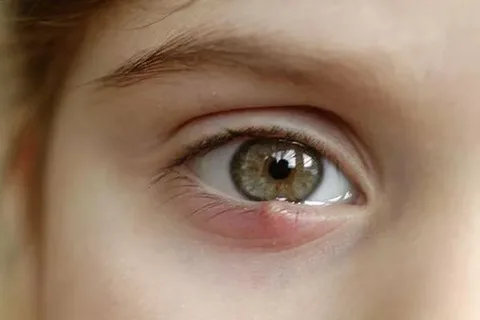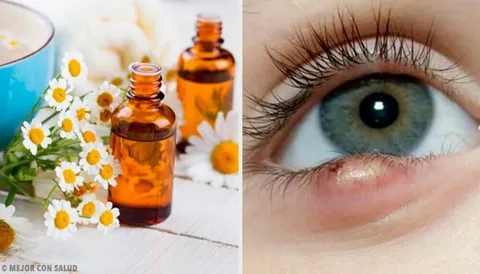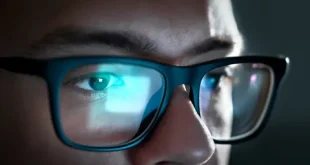A stye can be a painful and annoying condition that affects the eyelid, often causing discomfort, redness, and swelling. If you’re dealing with one, you likely want to know how to get rid of it as quickly as possible. In this article, we’ll explore what a stye is, its causes, and various remedies you can try at home. Plus, we’ll share some tips on how to prevent future occurrences.
What is a Stye?
A stye, or hordeolum, is a red, painful lump that forms on the edge of your eyelid. It’s typically caused by an infection in the oil glands of the eyelid. Styes can be internal or external, with external styes appearing on the outside of the eyelid and internal ones forming inside. While styes can be uncomfortable, they are usually harmless and resolve on their own.
Symptoms of a Stye
Understanding the symptoms can help you identify a stye quickly:
- Redness and Swelling: The eyelid will appear swollen and red.
- Pain or Tenderness: The affected area is often painful to touch.
- Pus-filled Bump: A stye may develop a white or yellow tip, similar to a pimple.
- Crustiness: You may notice crust forming around the eye, especially after sleep.
- Tearing: Increased tearing can occur with a stye.

Common Causes of Styes
Knowing what causes styes can help you avoid them in the future. Here are some common culprits:
- Bacterial Infection: Most styes are caused by bacteria, particularly Staphylococcus.
- Blocked Oil Glands: If oil glands become clogged, they can become infected.
- Poor Hygiene: Not cleaning your eyelids or using contaminated makeup can lead to infections.
- Eye Strain: Excessive rubbing of the eyes can irritate them and lead to styes.
- Chronic Conditions: Conditions like blepharitis or diabetes may increase the risk of developing styes.
Fast Remedies to Get Rid of a Stye
If you’re looking to get rid of a stye quickly, here are several remedies you can try at home. Always consult with a healthcare provider if symptoms persist.
1. Warm Compress
A warm compress is one of the most effective home remedies for a stye.
How to Use:
- Prepare: Soak a clean cloth in warm (not hot) water.
- Apply: Wring out excess water and place the cloth over your closed eyelid for 10-15 minutes.
- Repeat: Do this 3-4 times a day.
The warmth helps to open the clogged glands and promotes drainage, reducing inflammation and pain.
2. Eyelid Hygiene
Keeping your eyelids clean can help speed up recovery.
How to Clean:
- Use a gentle eyelid scrub or baby shampoo diluted with water.
- Moisten a cotton ball or pad and gently wipe along the eyelid, focusing on the area around the stye.
- Rinse with clean water.
3. Over-the-Counter Pain Relievers
If your stye is causing significant discomfort, consider taking over-the-counter pain relievers such as ibuprofen or acetaminophen.
4. Tea Bags
Certain teas, like chamomile or green tea, have anti-inflammatory properties that may help reduce swelling.
How to Use:
- Brew a tea bag and allow it to cool slightly.
- Place the tea bag over your closed eye for 10-15 minutes.
5. Avoid Makeup and Contact Lenses
While you have a stye, avoid using makeup and contact lenses to prevent further irritation and contamination.

When to See a Doctor
In most cases, styes resolve on their own. However, you should see a healthcare provider if:
- The stye persists for more than a week.
- Your vision is affected.
- You experience severe pain or swelling.
- You develop a fever.
A doctor may prescribe antibiotic ointments or other treatments if necessary.
Preventing Future Styes
Taking steps to prevent styes can save you discomfort in the future. Here are some effective strategies:
1. Maintain Good Hygiene
- Wash Your Hands: Regularly wash your hands, especially before touching your face.
- Clean Your Eyelids: Use eyelid wipes or gentle cleansers to keep the area clean.
2. Avoid Rubbing Your Eyes
If your eyes are itchy or irritated, resist the urge to rub them. Instead, try using lubricating eye drops.
3. Replace Old Makeup
Old or contaminated makeup can harbor bacteria. Be sure to replace your makeup regularly, especially eye makeup.
4. Use Clean Towels
Always use clean towels and washcloths to avoid transferring bacteria to your eyes.
5. Manage Stress
Stress can weaken your immune system, making you more susceptible to infections. Consider stress-reducing activities like yoga, meditation, or regular exercise.
Natural Remedies for Styes
If you prefer natural remedies, here are a few options:
1. Aloe Vera
Aloe vera has natural antibacterial and anti-inflammatory properties. Apply fresh aloe vera gel directly to the stye to promote healing.
2. Turmeric Paste
Turmeric contains curcumin, known for its anti-inflammatory properties. Mix turmeric powder with a little water to form a paste, then apply it to the stye for about 15 minutes before rinsing.
3. Castor Oil
Known for its soothing properties, castor oil can help reduce inflammation. Dab a small amount onto the stye using a clean cotton swab.

Lifestyle Changes for Eye Health
In addition to the tips above, consider these lifestyle changes to promote overall eye health:
1. Stay Hydrated
Drinking plenty of water keeps your body hydrated, which can help maintain healthy skin and eyes.
2. Eat a Balanced Diet
A diet rich in vitamins A, C, and E, as well as omega-3 fatty acids, can promote eye health. Foods like carrots, spinach, nuts, and fatty fish are excellent choices.
3. Get Enough Sleep
Adequate rest is essential for overall health, including eye health. Aim for 7-9 hours of quality sleep each night.
4. Protect Your Eyes
Wear sunglasses when outdoors to protect your eyes from UV rays and debris.
Conclusion
Dealing with a stye can be uncomfortable, but with the right remedies and preventive measures, you can alleviate the symptoms and reduce the likelihood of future occurrences. Remember to practice good hygiene, use warm compresses, and consult a healthcare provider if necessary. By taking care of your eyes and maintaining a healthy lifestyle, you can enjoy clearer vision and better overall eye health.
Whether you’re looking to get rid of a stye fast or just want to learn how to prevent them in the future, this guide provides you with all the information you need. Take care of your eyes—they’re your windows to the world!
